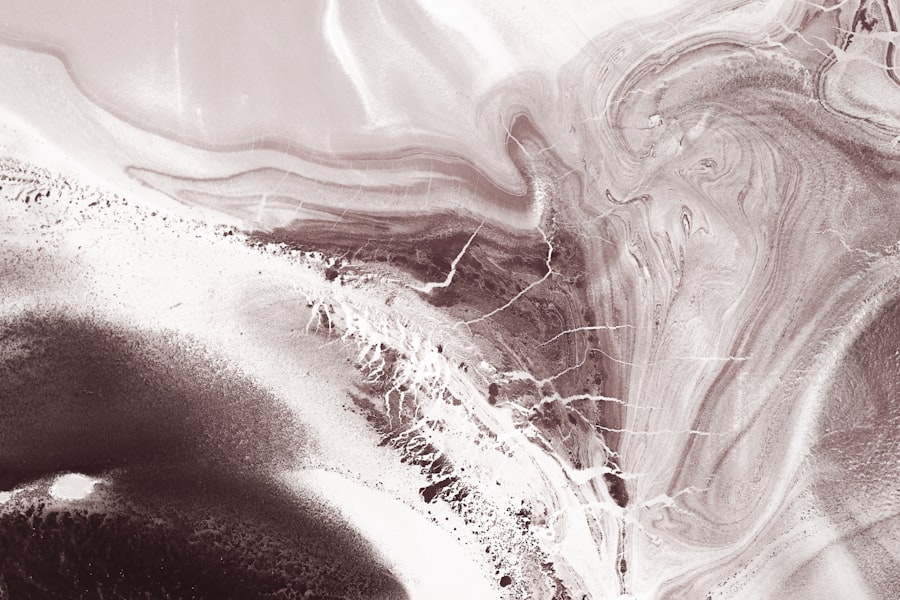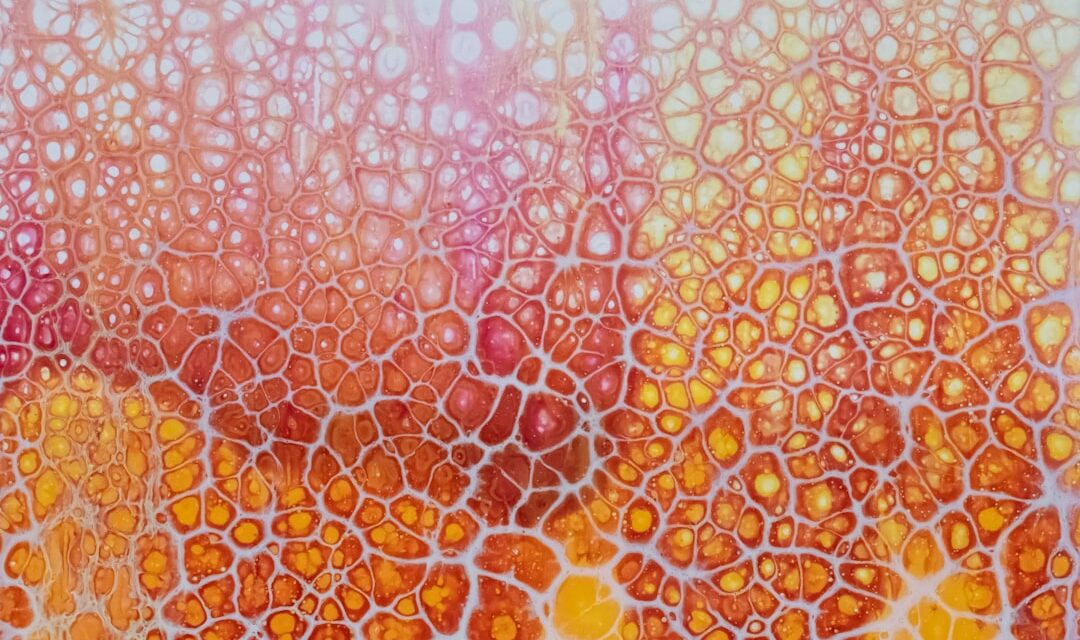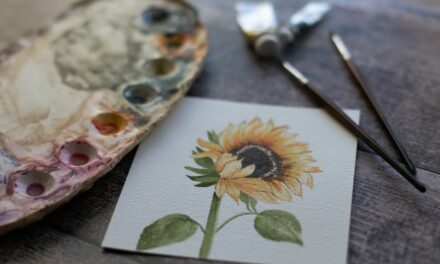Gradation in art refers to the gradual transition from one colour, tone, or texture to another. This technique is fundamental in creating a sense of realism and depth within a piece, allowing artists to manipulate light and shadow effectively. Gradation can be observed in various forms, such as the subtle shift from light to dark in a painting or the smooth blending of colours in a pastel drawing.
It serves not only as a visual tool but also as a means of conveying emotion and atmosphere, enhancing the overall impact of the artwork. The concept of gradation extends beyond mere aesthetics; it is deeply rooted in the principles of design and composition. Artists utilise gradation to guide the viewer’s eye through the artwork, creating a sense of movement and flow.
By employing gradation, an artist can evoke feelings of calmness or tension, depending on how the transitions are executed. For instance, a soft gradation may impart serenity, while abrupt changes can create a sense of chaos or urgency. Understanding this technique is crucial for any artist seeking to elevate their work and engage their audience on a deeper level.
Summary
- Gradation in art refers to the smooth transition from one shade to another, creating a sense of depth and dimension.
- The technique of gradation has been used in art for centuries, with examples found in ancient cave paintings and classical art.
- Tools and materials for creating gradation include blending stumps, brushes, and various drawing and painting mediums such as graphite, charcoal, and acrylics.
- Techniques for achieving smooth gradation include blending, layering, and using a light touch to gradually build up the desired effect.
- Gradation can be used to create depth and dimension in artwork, adding a sense of realism and visual interest to the composition.
The History of Gradation as an Art Technique
Evolution of Gradation in Art
This period marked a significant evolution in the understanding and application of gradation, as artists began to explore its potential for conveying complex emotions and narratives. As art movements progressed into the Baroque and Romantic periods, the use of gradation became even more pronounced. Artists such as Caravaggio employed dramatic contrasts between light and shadow, using gradation to heighten emotional intensity and draw attention to focal points within their compositions.
Impressionism and the Experimentation with Colour Gradation
The Impressionists further revolutionised the technique by experimenting with colour gradation, capturing the fleeting effects of light in their landscapes. This shift not only expanded the possibilities of gradation but also influenced subsequent movements, including Post-Impressionism and Abstract Expressionism, where artists continued to explore the boundaries of this essential technique.
Legacy of Gradation in Art
The continued exploration of gradation has left a lasting impact on the art world, with artists still employing this technique to create depth, volume, and emotional intensity in their work.
Tools and Materials for Creating Gradation

To achieve effective gradation in artwork, artists must select appropriate tools and materials that facilitate smooth transitions. Traditional mediums such as graphite, charcoal, and pastels are particularly well-suited for creating gradation due to their blendability. Graphite pencils can be layered to produce varying degrees of darkness, allowing for subtle shifts in tone.
Charcoal offers a rich black hue that can be easily smudged and blended, making it ideal for creating dramatic contrasts. Pastels, with their vibrant pigments, can be layered and blended to achieve stunning colour transitions. In addition to traditional mediums, digital art has opened up new avenues for exploring gradation.
Software such as Adobe Photoshop or Procreate provides artists with an array of tools designed specifically for blending colours seamlessly. Digital brushes can mimic traditional techniques while offering the flexibility to undo mistakes or experiment with different effects without the constraints of physical materials. Furthermore, digital platforms allow for precise control over opacity and layering, enabling artists to create intricate gradations that may be challenging to achieve with traditional methods.
Techniques for Achieving Smooth Gradation
Achieving smooth gradation requires a combination of technique and practice. One effective method is layering, where artists gradually build up colour or tone in thin layers. This approach allows for greater control over the transition between shades, resulting in a more natural appearance.
For instance, when working with watercolours, an artist might start with a light wash and gradually add more pigment to create depth. Similarly, in oil painting, glazes can be applied to achieve luminous transitions that mimic the effects of light. Blending is another crucial technique for creating smooth gradation.
Artists often use tools such as blending stumps or their fingers to merge colours seamlessly. In pastel work, for example, an artist might apply different colours side by side and then use a finger or a cloth to blend them together gently. This technique requires a delicate touch; too much pressure can disrupt the surface and create harsh lines rather than smooth transitions.
Practising these techniques on various surfaces will help artists develop their skills and find their unique approach to achieving gradation.
Using Gradation to Create Depth and Dimension
Gradation plays a pivotal role in establishing depth and dimension within an artwork. By manipulating light and shadow through gradual transitions, artists can create the illusion of three-dimensionality on a two-dimensional surface. For instance, in landscape painting, an artist might use lighter colours in the foreground and darker shades in the background to suggest distance.
This atmospheric perspective relies on gradation to convey depth effectively. In portraiture, gradation is equally essential for rendering realistic skin tones and facial features. Artists often employ subtle shifts in colour to depict highlights on the forehead or shadows under the chin, enhancing the three-dimensional quality of the subject.
The careful application of gradation allows for a more lifelike representation, capturing the nuances of human expression and form. By understanding how to manipulate gradation effectively, artists can elevate their work from flat representations to dynamic compositions that engage viewers on multiple levels.
Experimenting with Colour Gradation

Colour gradation offers artists an exciting opportunity to explore the emotional and psychological effects of colour transitions. By blending hues from one end of the spectrum to another, artists can create vibrant compositions that evoke specific feelings or atmospheres. For example, a gradient transitioning from warm reds and oranges to cool blues can suggest a sunset or sunrise, imbuing the artwork with a sense of time and place.
Experimenting with colour gradation also allows artists to develop their unique style and voice. By playing with unexpected combinations or unconventional transitions, they can create striking visual effects that challenge traditional perceptions of colour relationships. For instance, an artist might juxtapose complementary colours in a gradient to create visual tension or harmony within their work.
This exploration not only enhances technical skills but also encourages creative thinking and innovation in artistic expression.
Incorporating Gradation into Different Art Forms
Gradation is not limited to painting or drawing; it can be effectively incorporated into various art forms, including sculpture, textiles, and graphic design. In sculpture, artists often use gradation in materials such as stone or metal to create visual interest and texture. For example, a sculptor might polish certain areas while leaving others rough-hewn, resulting in a dynamic interplay between light and shadow that enhances the overall form.
In textile arts, such as weaving or dyeing, gradation can be achieved through techniques like ombre or dip-dyeing. These methods allow for seamless transitions between colours within fabric, creating visually stunning patterns that can transform garments or home decor items into works of art. Graphic designers also utilise digital tools to create gradients in logos or promotional materials, enhancing visual appeal and brand identity through colour transitions that capture attention.
Tips for Mastering Gradation in Your Artwork
Mastering gradation requires patience and practice; however, several tips can help artists refine their skills more effectively. First and foremost, it is essential to observe how light interacts with objects in real life. Studying natural forms—such as fruits or landscapes—can provide valuable insights into how colours shift under different lighting conditions.
Artists should take time to sketch these observations, focusing on capturing the nuances of gradation. Additionally, experimenting with various tools and techniques is crucial for developing a personal approach to gradation. Artists should not hesitate to try different mediums—be it watercolour, acrylics, or digital platforms—to discover which best suits their style.
Keeping a sketchbook dedicated to exploring gradation can also be beneficial; this allows for experimentation without the pressure of creating a finished piece. Finally, seeking feedback from peers or mentors can provide fresh perspectives on one’s work. Constructive criticism can highlight areas for improvement while also encouraging exploration beyond comfort zones.
By embracing both practice and feedback, artists can master the art of gradation and incorporate it seamlessly into their creative repertoire.
If you’re intrigued by the nuances of art techniques such as gradation, you might find it equally enriching to explore how different art movements and individual artists have applied these techniques in their work. For instance, the Futurism movement, known for its dynamic energy and focus on modernity, offers a fascinating contrast in its approach to visual representation. You can delve deeper into this art movement by reading An Introduction to Futurism, which provides insights into how Futurist artists broke away from traditional forms and experimented with elements of motion and technology in their artwork.




